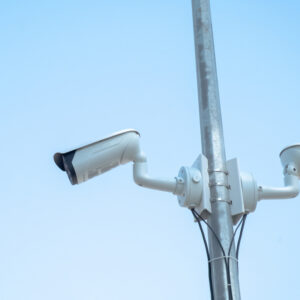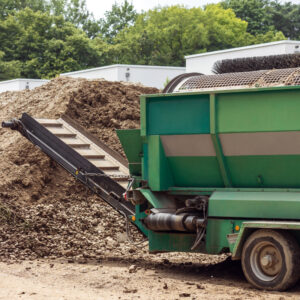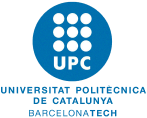Research in the Field of Technology
A Self-Managed Urban Pruning
Valorization Station not only serves as a study site for biological material but also provides resources for technological research related to mechanics and ICT (Information and Communication Technology), exploring what to do with pruning waste in innovative ways. This interdisciplinary research can significantly contribute to scientific and technological advancements across various fields.
The different research lines recently initiated include:
The development of technologies for material detection through imaging.
 Objectives:
Objectives:
- Develop advanced computer vision systems to identify and classify materials in vegetable waste.
- Improve the accuracy and efficiency of the automatic separation of materials.
- Reduce manual labor and increase the overall performance of the waste management system.
Research Questions:
- Which computer vision techniques are most effective for detecting materials in vegetable waste?
- How can advanced optical sensors be integrated with deep neural network algorithms to improve material identification?
- What impact does automated material detection have on the efficiency and sustainability of the EVUP Network?
The computer-based treatment of data collection, analysis, and conclusions from the scale.
 Objectives:
Objectives:
- Develop software tools for managing and analyzing data collected from the scale.
- Implement artificial intelligence systems for the automatic interpretation of data.
- Improve the accuracy and speed of decision-making based on weighing data.
Research Questions:
- Which algorithms are most effective for the real-time collection and analysis of scale data?
- How can the accuracy of automatically collected and processed data be ensured?
- What benefits can be obtained from integrating artificial intelligence systems into weight data management?
The development of specialized machinery for screening.
 Objectives:
Objectives:
- Innovate in the design of specific machinery for the screening of materials.
- Improve the effectiveness of screening processes to enhance the quality of final products.
- Reduce the operational costs associated with the screening process.
Research Questions:
- What mechanical designs can increase the efficiency of material screening?
- How can automatic control systems be implemented in screening machinery to improve its effectiveness?
- What economic impact does specialized machinery have on the overall waste management process?
The study of trial and error in the analysis of new production and supply processes for obtained products.
 Objectives:
Objectives:
- Evaluate new production processes through controlled trial-and-error experiments.
- Identify optimal strategies for the efficient supply of derived products.
- Improve the quality and sustainability of the final products obtained.
Research Questions:
- What new production processes can enhance the quality of products obtained from the EVUP Network?
- How can the supply of derived products be optimized to maximize operational efficiency?
- Which trial-and-error methods are most effective for identifying optimal production and supply strategies?
These research lines not only drive technology applied to vegetable waste management but also open new frontiers in the application of science and technology for sustainability. Research in these areas promises significant benefits in terms of sustainable economic development and environmental preservation.
| Data Collection |
| Electronic Scales |
Used to measure the weight of pruning and gardening waste arriving at the station. |
| Often connected to computer systems for automatic data collection. |
| Image Recognition and Detection Systems |
Cameras and optical sensors that capture images of incoming materials to analyze the composition and quality of the waste. |
| Image recognition software classifies materials based on their characteristics. |
| Data Analysis |
| Waste Management Software |
Applications that integrate all collected data and allow for the management and analysis of information. |
| Features for tracking weighing, classification, processing, and distribution of waste. |
| Real-Time Monitoring Systems |
Internet-connected sensors that monitor various conditions in real time, such as waste levels in containers, air quality in composting areas, etc. |
| They facilitate remote management and immediate responses to issues. |
| Big Data Platforms and Data Analysis |
Allow for the analysis of large volumes of data collected from various sources. |
| Data visualization tools to generate reports and graphics that aid in decision-making. |
| API Technologies: |
Enable secure and immutable recording of all waste transactions and movements. |
| Per assegurar la transparència en la gestió dels residus. |
The technologies to be developed are related to a series of necessary tools and instruments that must be linked to the Self-Managed EVUPs to optimize the performance of all the material that enters and exits, as well as the data generated in the process. The station technology focuses primarily on data collection and analysis, and the tools presented in the following table provide a general outline of the direction being pursued.

 Objectives:
Objectives:
 Objectives:
Objectives:
 Objectives:
Objectives:
 Objectives:
Objectives:









